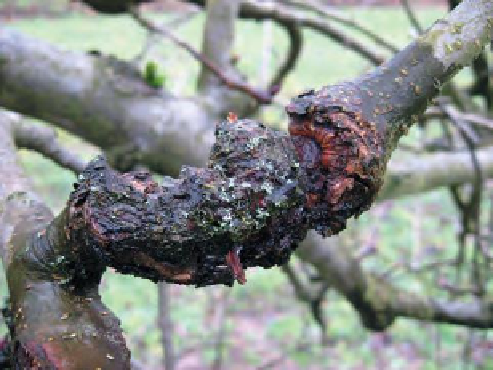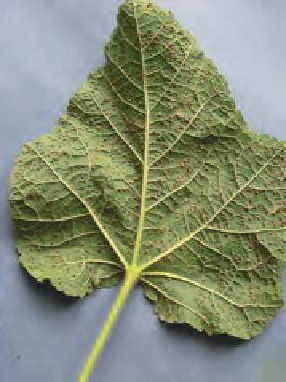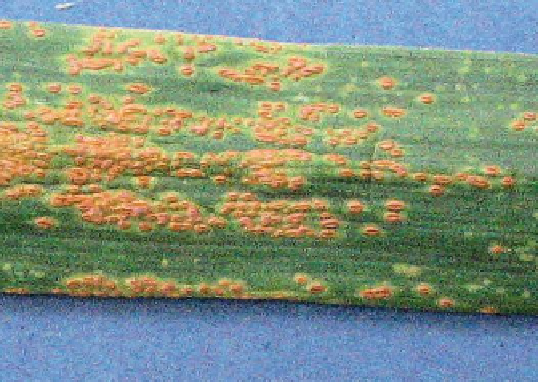Agriculture Reference
In-Depth Information
(b)
(a)
Figure 19.13
(a) Apple and pear canker - note the swollen branch and exposed wood; (b) coral spot - note the
swollen orange pustules
(a)
(b)
Figure 19.14
(a) Hollyhock rust; (a) leek rust
The rusts are a distinctive group of fungi often with
complex life cycles involving up to five different spore-
forms within the same fungal species.
hollyhock flower can be affected in a similar way to
the leaf. Continued infection in wet summers often
leads to stunted plants.
Life cycle and spread
.
Two types of spore are involved
in infection. Teliospores are relatively large and are able
to survive the winter, and then, in damp conditions,
infect young hollyhock shoots in late spring to begin
the disease cycle. In mild winters, the fungus may live
as
mycelium
(see p. 252) within the leaf and shoot
tissues. In the warmer months, the infection cycle
takes about 14 days from infection to mature leaf spot
production; and at this time, the mass of hyphae and
spores that have developed push through the lower
epidermis to create the typical
raised spot
symptom.
A new cycle of infection begins if the weather is damp.
In the early summer period, the raised leaf spots are
grey
in colour from the numerous tiny
basidiospores
that are produced from the teliospores.
19
Hollyhock rust (
Puccinia malvacearum
)
This is the most common disease on hollyhocks in UK.
It is especially damaging in wet summers.
Damage
.
Leaves are usually the worst plant parts
attacked. Starting on the lower leaves, there
often appear numerous raised grey spots (see
Figure 19.14a) on the
lower surface
of the leaf. Later
in the summer, raised reddish-orange spots may be
produced on the lower leaf surface. Flat yellow spots
may show on the upper leaf surface indicating where
the infection has taken place directly below. After
severe levels of infection, the leaves often shrivel
and die.
Stems
may show a cankerous appearance
after infection. The
sepals
on the outer part of the








